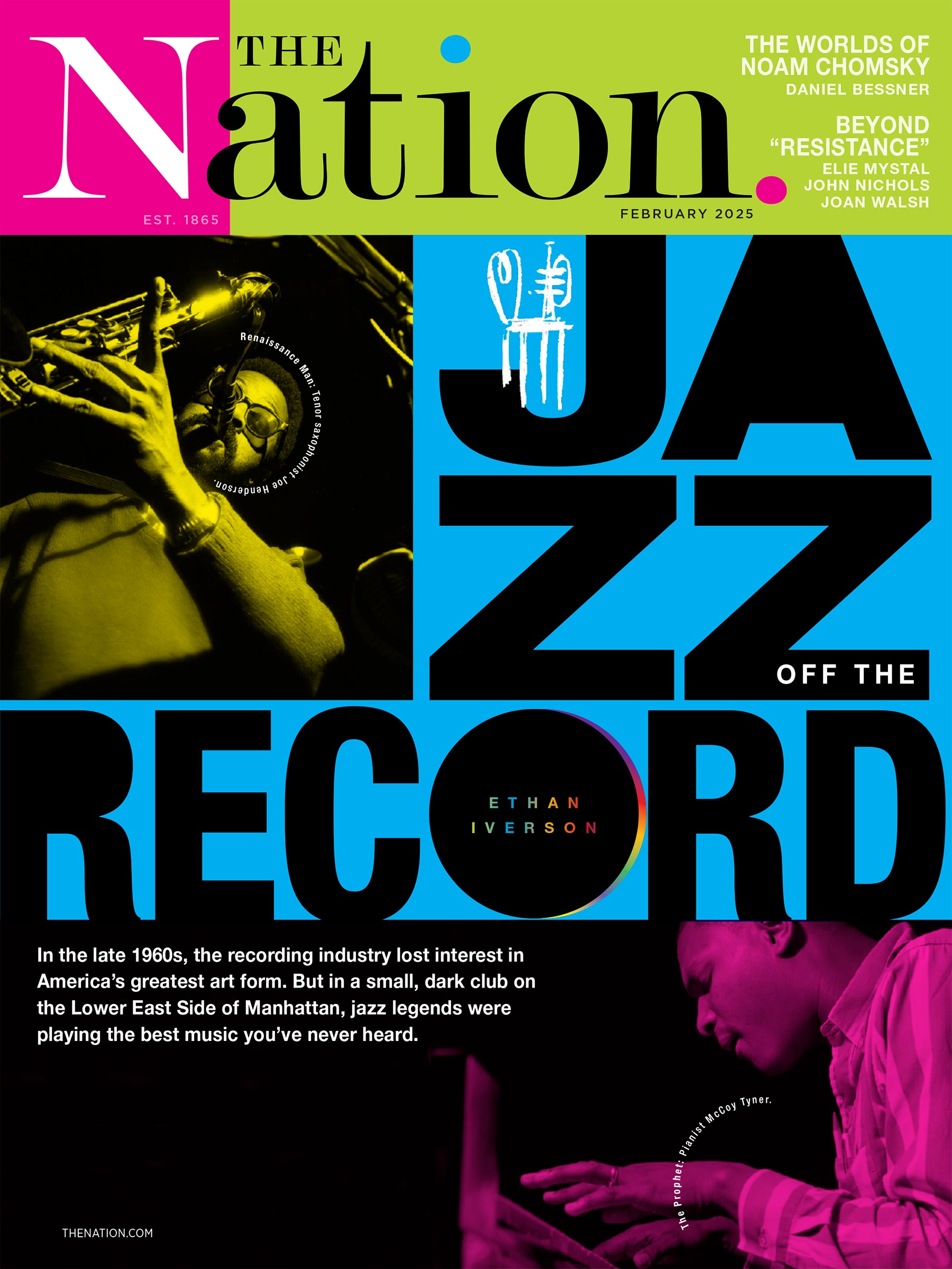The Ivory Tower Doesn’t Pay Taxes, but They Should Still Pay Up
Activists in St. Louis want Washington University—with its multibillion-dollar endowment—to pony up to help rebuild public schools.

Brookings Hall at Washington University, Danforth Campus, the main campus in St Louis, Missouri, on a sunny day.
(benedek / Getty Images)
Every year, instead of property taxes, Brown University pays the city of Providence around $8.7 million. This is chump change compared to Brown’s $7.2-billion endowment and a fire-sale discount on the $49.3 million a year the university would owe if it paid the standard rate.
But universities are nonprofits, and therefore largely tax-exempt. Still, Ivy League institutions like Princeton help fund public schools. Princeton’s endowment is five times larger than Brown’s, but they pay substantially less—$2.5 million yearly as part of a PILOT program, a “payment in lieu of taxes.”
PILOT programs are an annual voluntary donation (some might say a bribe) that universities pay to their host cities. But why do institutions feel the need to buy off the communities around them? Shouldn’t New Haven, Connecticut, be ecstatic to have Yale University, one of the most prestigious temples of academic enlightenment, within its borders?
Davarian Baldwin, author of In the Shadow of the Ivory Tower, argues that universities have an increasingly parasitic relationship to their host cities. “Meds and eds are the biggest low-wage employers for entire regions,” Baldwin told me. “They set the wage ceiling, and are often the biggest land holders, which determines property values for an entire region. They’re also often the biggest healthcare providers, so they set the healthcare standards. Finally, they’re often the biggest police presence in the local community.”
Universities across the country don’t pay taxes, fight to push down wages, and then benefit from the cheap local labor: cooks, landscapers, staff, contractors, janitorial service, and so on—the often-invisible labor that runs higher ed. It’s not a coincidence that deindustrialized cities like New Haven operate with austere budgets while endowments like Yale’s reach astronomical levels. As Baldwin writes:
Schools also reap the benefits of police and fire protections, snow and trash removal, road maintenance, and other municipal services while shouldering little financial burden. Homeowners and small-business owners take on the weight of inflated property taxes caused by urban campuses while the cost of rental properties skyrocket[s].
In 2012, recognizing that this dynamic between the community and Yale University would not change on its own, New Haven Rising organized, as Jennifer Klein wrote in Dissent in 2015, to “address the problems caused by the disappearance of industrial jobs, the fecklessness of local Democrats, and austere state budgets.” The group, she continued, “represented an attempt to build an economic justice movement across the various communities of New Haven—one involving people who are unemployed, underemployed, and often politically voiceless.”
A decade of pressure worked—Yale’s PILOT is now the Rolls-Royce of such programs. The university will shell out around $22.5 million to New Haven in 2024, though it’s framed in multiyear plans, which make the numbers sound bigger. Over the past 20 years, Yale brags that it has paid $134 million and promises another $135 million over the next six.
A PILOT is a compromise. Universities are aware of how much their nonprofit status saves them on taxes, and PILOTs are a skim off the top of what’s being generated. Yale’s endowment is a staggering $44.4 billion. That’s $41,400,000,000—similar to the GDP of nations like Latvia and El Salvador. The state of Connecticut spends only $13.3 billion to serve more than half a million K-12 public education students each year.
Wash U
Programs at Washington University in St. Louis rank with the best at Brown, Yale, Princeton, and MIT. The school advertises an enormous Danforth Campus spread over 169 acres. Wash U owns another 17 city blocks, and an additional 164 urban acres for the Medical Campus. The university is one of the largest employers in the St. Louis region, and during the pandemic, the endowment soared from $9–15 billion. It sits at about $12.5 billion as of 2023, with $19.8 billion in total assets. Last year, I paid more property taxes on a 2005 Jeep Loredo than the Wash U did on its sprawling campuses.
Popular
“swipe left below to view more authors”Swipe →Wash U has grown significantly over the last 50 years while cities like St. Louis have undergone profound social deterioration. Last century’s redlining and restrictive housing covenants caused a population collapse and pushed the city into a spiral of decay and austerity. St. Louis is now a city with a homelessness crisis that is so consistent and ongoing that it’s hard to call it a crisis. It affects thousands of children, many of whom live on the north side of St. Louis, across “the Delmar Divide,” which a BBC documentary described as one of the largest “economic cliffs” in the country. On one side of Delmar Boulevard is Wash U’s manicured Danforth Campus, where affluent students walk freshly paved sidewalks to new buildings that are popping up every year; on the other is North St. Louis, where Jim Crow poverty has reigned for a century and the population has dropped by 40 percent from 1990 to 2019. Here, rows of historic brick housing have been demolished, turning entire blocks into wild green lawns gone to seed.
About 20 percent, or 3,600 kids, in St. Louis Public Schools (SLPS) are homeless. That number is down from 5,500 in 2014. Many of these kids live in Section 8 housing, and as St. Louis Public Radio reported in 2014, many fend for themselves in vacant buildings where they watch after each other.
Heavy scrutiny of St. Louis’s segregation and poverty arrived in the aftermath of the 2014 Michael Brown protests, and various departments at Wash U renewed their commitment to studying St. Louis’s segregation, poverty, and systemic racism. But no matter how many hours of community service that Wash U students rack up for their doctoral and graduate-school applications, the systemic problems continue. In 2020, Forward Through Ferguson, a nonprofit racial justice advocacy group, presented its report on St. Louis education: “On average, majority White districts in St. Louis receive and spend more funding per student than Majority Black districts.”
Very little has changed. The problem is money. Most white St. Louisans pay for private education from age 2 to 18—preschool all the way up to senior year. In St. Louis County, property taxes go to rich, majority-white districts. Luxury options in the exurbs range from the Google-esque campus of Ladue High School to the well-built facilities of Clayton, an affluent county district.
Meanwhile, impoverished and working-class St. Louisans are shuffled into a starved, anemic public system, which was once a robust public good. Dick Gregory, Arthur Ashe, and Tina Turner graduated from Sumner High School—an SLPS gem named for an abolitionist. Dozens of SLPS properties languish in decay while Wash U prefers to sponsor its own charter schools. The university offers “partnerships” to charter students at KIPP schools in an effort to admit more local, low-income, Pell-eligible students to itself. Charters escape teachers’ unions, divert resources, and are largely accountable to sponsors, or private boards of directors—not the public.
Operating all of St. Louis’ Public Schools cost around half a billion dollars per year, and state and federal grants are getting slashed in 2025. No one is demanding it should break the whole bank open, but using only that $12.5 billion endowment, Wash U could, right now, pay for all public education in St. Louis until 2050.
Tulips
In 2017, the student advocacy group WU/FUSED claimed that Washington University was spending millions of dollars every year on tulips alone, rapidly replanting so that there is never a wilting flower on campus.
Tulips are fragile—they only last a few weeks in spring, and the example speaks to the meticulously tended acreage of Washington University. The Danforth Campus is located at the foot of Forest Park, one of the largest urban greenspaces in the county. In the spring, every corner blossoms from rich black soil tilled by groundskeepers. Wash U’s signature buildings are pink castles complete with turrets. Its Collegiate Gothic courtyard is shaded by towering sweetgums, and maintenance keeps the garden beds watered so they explode with color in Easter unison. Old blends with the new turquoise glass of laboratory buildings and state-of-the-art lecture halls. It’s pleasant to bicycle through the Wash U campus on a summer afternoon.
The same could be true for SLPS campuses, but middle schools like L’Ouverture, named for the Haitian revolutionary, offer zero campus greenspace. L’Ouverture’s recess area is an asphalt parking lot with a view, across the street, of a junkyard full of rusting helicopter bodies and stripped US Air Force jets (which might be cool to some students, but it’s not Forest Park).
When asked why they don’t consider a PILOT program necessary, Wash U’s marketing and communications department pointed me to a community investment page. They list their contributions as more than enough, citing weak examples like $5 million to upgrade to a light-rail station in the middle of Wash U Medical and $750,000 to improve an intersection at the doorstep of the university where panhandling is common.
On campus, students, administrators, and professors don’t have to fear cars, or St. Louis’s homeless, or interruptions from the outside world, but that’s an illusion—the city inside the university is what Davarian Baldwin calls the “UniverCity”—a political-economic entity that manipulates local governance, warps zoning laws, and siphons off public funding.
But grassroots organizations from Ithaca to Baltimore are following the New Haven model, pressuring universities to see their financial obligations to the communities outside the walls. In St. Louis, the Democratic Socialists of America and One UCity have drafted a Wash U PILOT program calling for $15 million to be paid directly to education in St. Louis—$12 million for St. Louis Public Schools and $3 million for University City School District. The initiative is called “Wash U Owes You.”
This proposal is part of the Green New Deal for Public Schools—$15 million would fund electric buses, create public green spaces, update heating and cooling systems, and remove lead paint and asbestos from aging St. Louis facilities. The funding would pay additional teachers and counselors caring for children who’ve been failed by every system in the county.
For Blue Ehrenstrom and fellow STL DSA organizers, 2022’s catastrophic flooding in St. Louis showed how many residents were vulnerable to temporary displacement and homeless. In emergencies, public school gymnasiums are often life-saving. The proposed $15 million would go to ensuring these spaces are ready when they will, inevitably, be needed.
Wash U could interpret this PILOT as an expansion of their decarbonization initiative, but they usually claim they already give lots to St. Louis. Many St. Louisans are beginning to suspect that they’re taking more than they give.
As Ehrenstrom told me: “We talked to a lot of people that we’ve not needed to persuade. They hear the facts—that Wash U doesn’t pay any property taxes on their main campus, and all these properties that they own—and people jump to like, ‘Oh, of course they should have to pay.’ And those who have a negative relationship to the university range from Black families in various school districts to rich white homeowners who are just upset about the taxation issue.”
Austerity Ahead
The enrollment cliff is here. US high school graduates are, more and more, foregoing the significant debts required to attend college. This combined with declining US birthrates, which never recovered from the 2008 recession, means less students, dozens of college closures, and more faculty layoffs ahead. How will universities survive with less students? Places like Wash U have shifted where they make most of their money, and they need their students less and less. As Baldwin points out in Shadow of the Ivory Tower, US universities enjoy many revenue streams outside tuition: “This campus space is property tax exempt because they’re providing education, but this is a profoundly lucrative business arrangement for third-party investors like Moderna, Pfizer, Google, Apple. They have their R&D located on these campuses, which reduces overhead costs, and it’s a captive audience of a low-wage graduate student workers.”
In 2023, Washington University made $29.2 million in royalty income alone, and does not recognize the student worker’s union, WUGWU. Benefitting from various branches of federally funded research and development, state and private universities collect royalties from licensing intellectual property—scientific advancements made possible by our tax dollars. Ivory Tower offers a litany of case studies that explain how corporations and universities work together to extract the labor of highly skilled graduate and doctoral students for cheap. Pharmaceuticals, medical technology, healthcare services, biomedical sciences, military industrial weaponry, software design—it generates a fortune, which pads the endowment, stiffs academic workers, and secures administrative salaries. Meanwhile surrounding communities continue to decay.
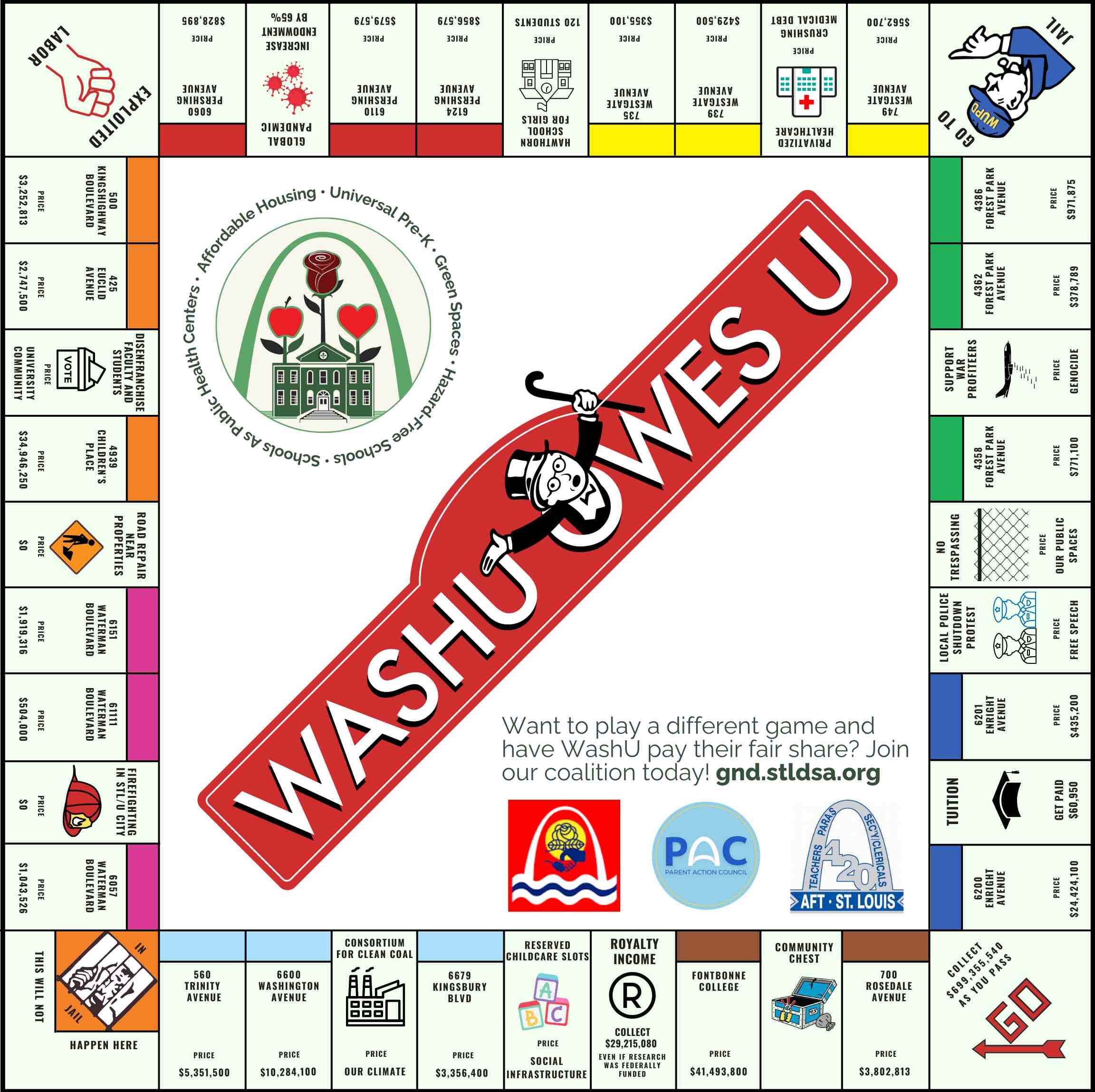
As Baldwin put it, money warps the perspective of the university; it becomes an entity that “imagines the world beyond the campus walls as either prime real estate or a dangerous threat to the brand.”
This predatory inclination is something universities are generally aware of. At the end of the spring 2024 semester, Wash U administration hung lamppost banners all around campus advertising a new initiative to make the school more organically connected with the city—the banners read, “In St. Louis, For St. Louis.”
The banners served as set decoration for violent police arrests of over a hundred anti-war activists who were demanding Wash U disinvest from our hometown arms manufacturer, Boeing, which supplies weapons to Isreal. Officers pulled people to the ground and zip-tied their hands. “There were brutalizing assaults,” León-Díaz told Student Life. “It was jarring to see my friends being treated like empty sacks of organs, entirely dehumanized, with no respect for their dignity.”
For weeks after the arrests, Wash U put up a temporary fence around the perimeter of the Danforth Campus. Suddenly, the green lawns and clean sidewalks, which usually communicate such public openness, were barricaded. Similar enclosure efforts of reshaped Columbia University, City College of New York, the University of California–Irvine, and many other campuses.
These heightening contradictions have made universities vulnerable in a way that could be catastrophic in the second Trump term. The administration promises to be horrific to American education, and as Quinn Slobodian pointed out on Democracy Now!, “The attack on free speech in the course of the protests over Gaza since October 6 have given us a kind of a preview of how unwilling Democrats, as well as Republicans, are to actually stand up for the right of academic investigation and expression in this country, and I think that universities will really be the kind of soft targets for many of those early cuts.”
The solution is to invest in local ecosystems—universities should help fund public schooling and affordable housing. They should cooperate with unions and offer living wages to their employees. Share the wealth. Not out of altruism, but self-interest—when right-wing attacks befall the ivory tower, the local community should see colleges as citadels to defend—not woke DEI hedge funds that brutalize protesters. How do you convince them? A PILOT is a good start.
More from The Nation
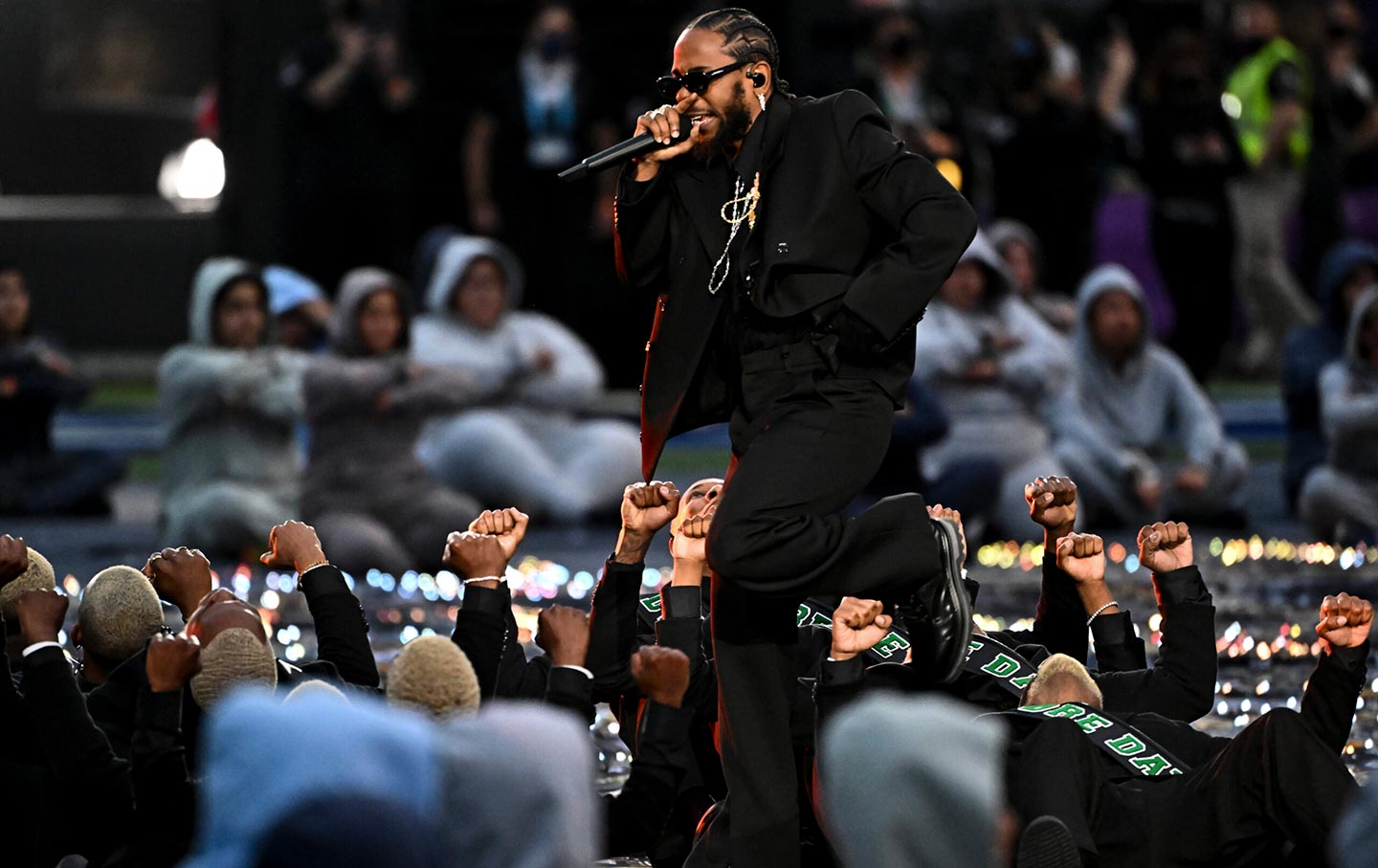
The Super Bowl Will Be a Spectacle of Black Excellence, but You’ll Need to Tune Out MAGA’s White Whine The Super Bowl Will Be a Spectacle of Black Excellence, but You’ll Need to Tune Out MAGA’s White Whine
The NFL, to my shock, has not prematurely surrendered to Trump and Elon Musk’s agenda of Black erasure.
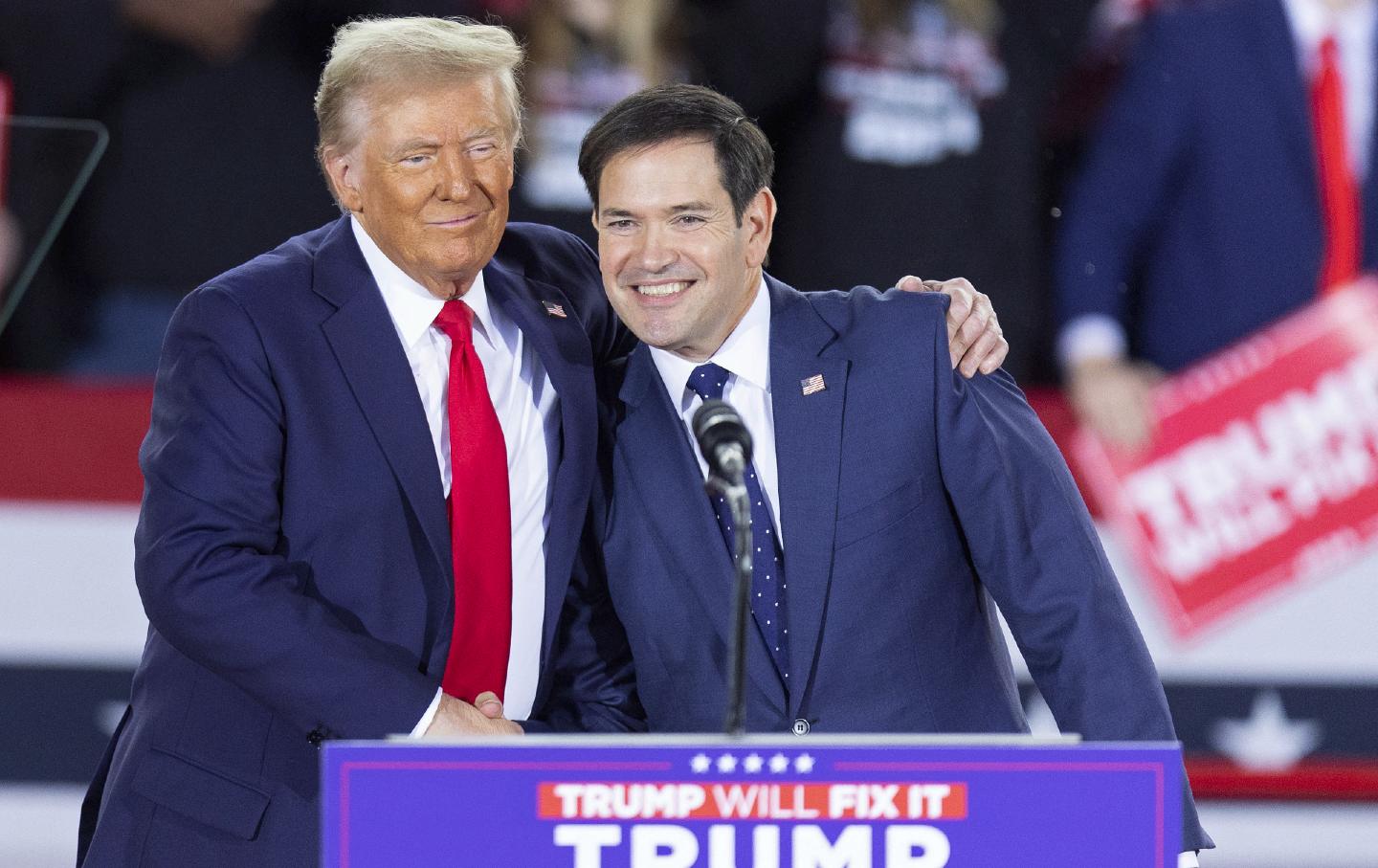
What the Neocons Do—and Don’t—Explain About Trump What the Neocons Do—and Don’t—Explain About Trump
The president’s foreign policy agenda remains unpredictable, but his war on liberal culture has deep roots.
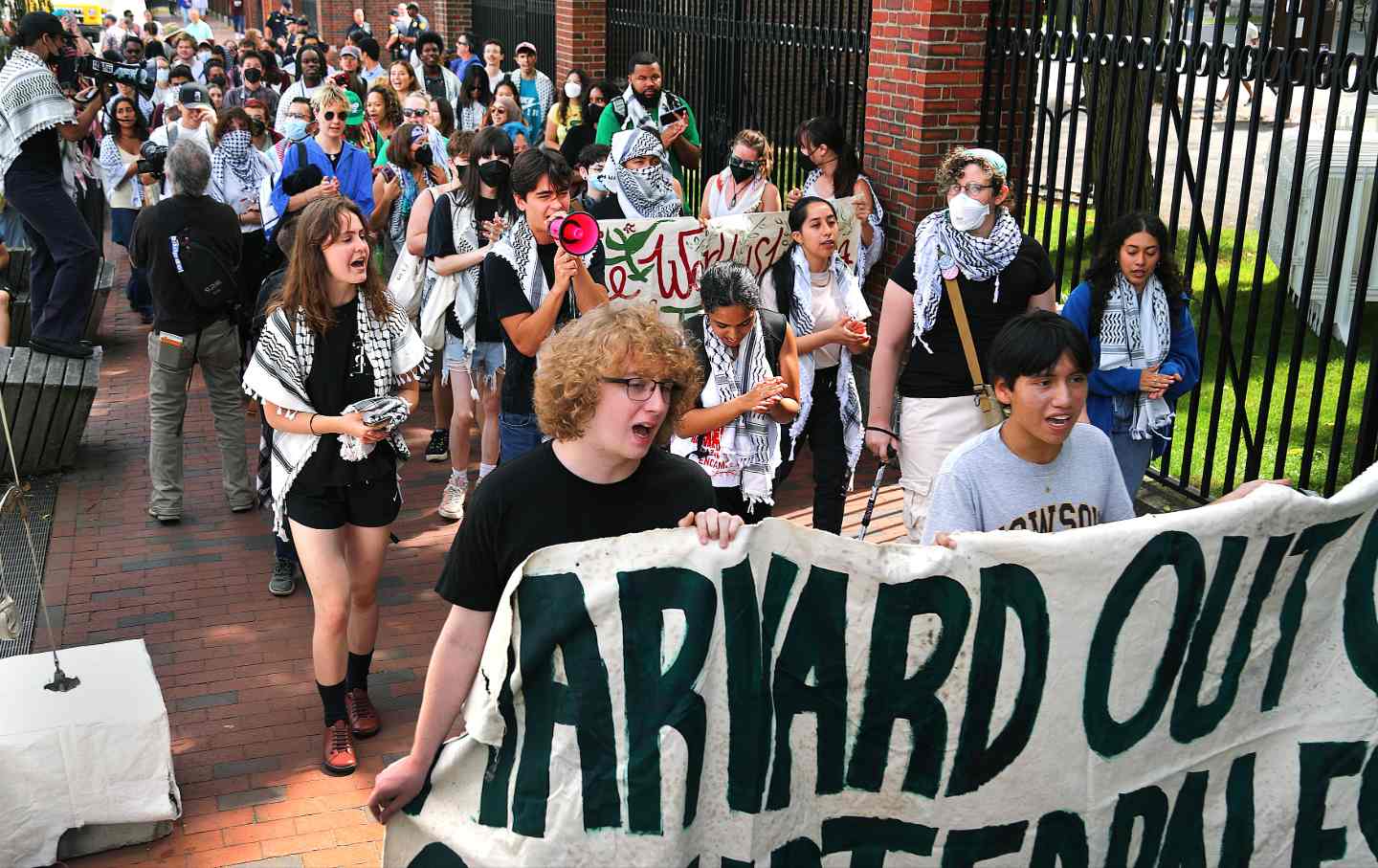
Harvard’s New Speech Rules Continue Their Pattern of Repression Harvard’s New Speech Rules Continue Their Pattern of Repression
The university’s adoption of the IHRA definition of anti-semitism conflates critique of Israel with antisemitic speech, directly attacking pro-Palestine activism and academic free...

Who Will Stop Elon Musk’s Coup? Who Will Stop Elon Musk’s Coup?
The world’s richest man now has the power to override congressional spending decisions and access to private information about every US taxpayer.
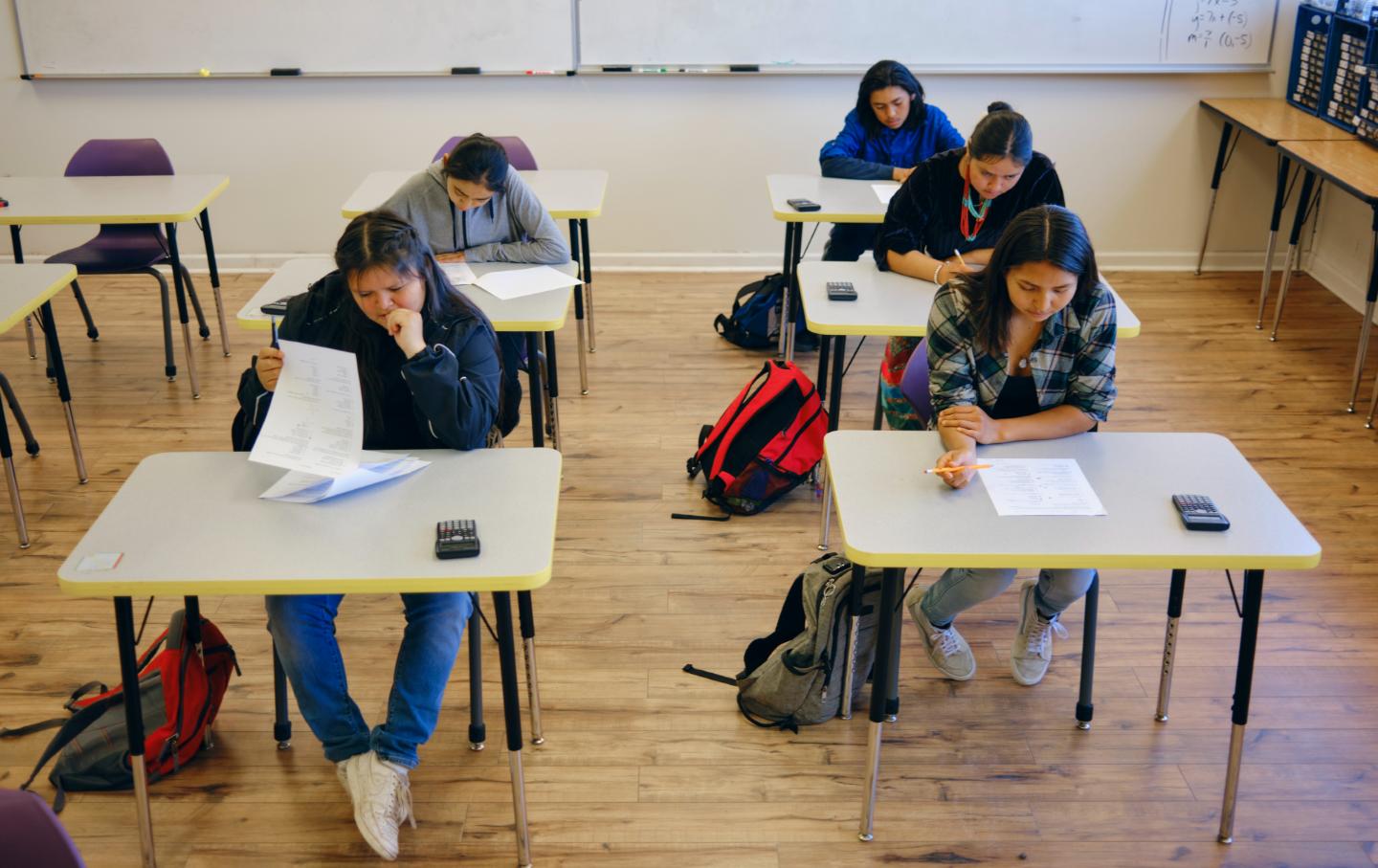
My High School Wanted to Expand Opportunities for Low-Income Students. Did It Limit Them Instead? My High School Wanted to Expand Opportunities for Low-Income Students. Did It Limit Them Instead?
A well-meaning effort to increase educational equity in Utah might not be helping those most in need. But there are ways to make these programs more accessible.
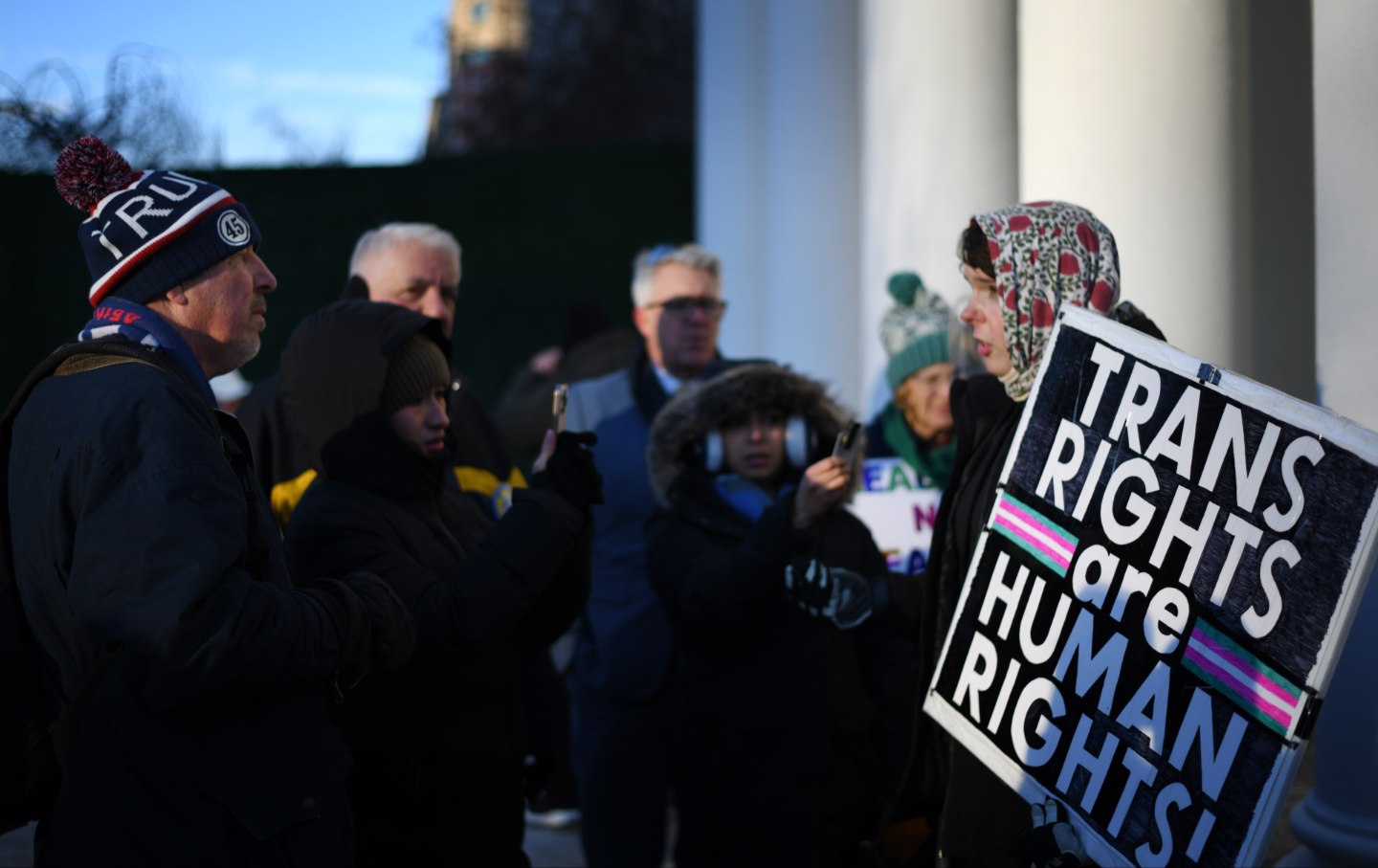
The Right to Pee Is Everything The Right to Pee Is Everything
Trans peoples' basic right to exist in the world is under assault. Bathrooms are at the heart of that fight.
